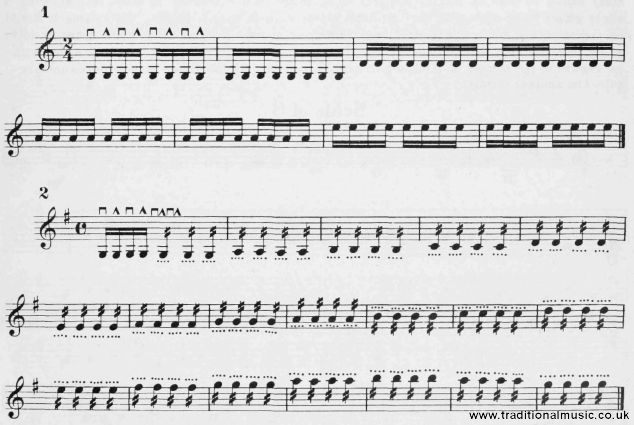Mandolin Self Instructor, online tutorial - Page 33
A simplified self learning system for the Mandolin with tuning instruction, song folio, chord diagrams, sheet music and PDF for printing. By ZARH MYRON BICKFORD
| Share page | Visit Us On FB |
|
The Tremolo (continued) 33
pick against the next string, the angle of hand and pick, the striking- of the pair of strings in
both down and up strokes, the looseness of the pick and the easy gliding of the back of the lit- tle finger on the top. There can be but one rule given as to the number of strokes to be played to any given note- it
must be an even number, that is, start with a down stroke and end with an up stroke. It is occa- sionally necessary to begin a tremolo with an up stroke, in which case this rule would have to be modified. A definite number, as four, eight or sixteen strokes, should never be applied or thought of, in con-
nection with notes of any denomination whatever, as this measured or rhythmical stroke does not make a tremolo. The following Exercises are for the purpose of developing the regularity and speed of the down
and up strokes and in their practice it is suggested that, instead of accenting the groups, the ac- cents be confined to each new note or letter, as it is encountered, thus, in the first Exercise, accent- ing the first G only, making the succeeding fifteen notes a steady but unaccented string" of strokes. These studies are to be practiced until the strokes can be made very rapidly and very evenly- just as though they were being counted or measured, but without doing this. The abbreviations in the second Exercise do not indicate the tremolo, but merely that each quarter note is to be played in sixteenths, this being made still plainer by means of the four dots over the notes. This abbrevi- ation was formerly used in mandolin music to indicate the tremolo, but never properly. |
||
 |
||